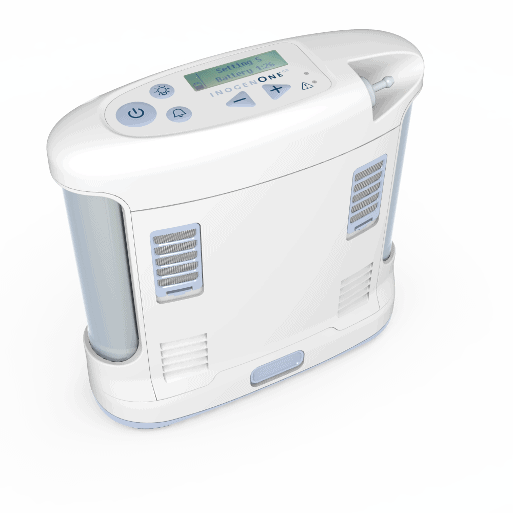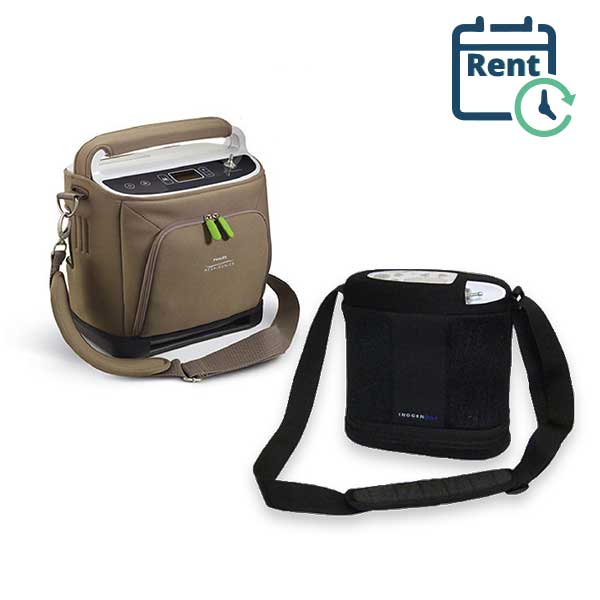The Best Strategy To Use For Portable Oxygen Concentrators
Wiki Article
The 8-Second Trick For Portable Oxygen Concentrators
Table of ContentsIndicators on Portable Oxygen Concentrators You Should KnowPortable Oxygen Concentrators Can Be Fun For EveryoneNot known Facts About Portable Oxygen ConcentratorsPortable Oxygen Concentrators Things To Know Before You Get This
Fixed oxygen concentrators were as soon as the requirement, but these tanks can evaluate 50 pounds and were extremely cumbersome (Portable Oxygen Concentrators). Currently, mobile oxygen concentrators finish the job, and they can suit a bag or bag! The only point you ought to remember is that mobile concentrators have extra limited oxygen distribution capabilitiesThere are 2 primary sorts of portable oxygen concentrators: pulse dose and continual circulation. As the name suggests, pulse dose concentrators give oxygen periodically, just activating when you breathe in. This type of gadget is generally recommended for COPD clients with minimal oxygen demands, as the quantity of O2 that a pulse dose concentrator can supply is relatively low.
This device can supply up to 3,000 m, L of oxygen every minute, while pulse dose devices have a tendency to cover out at 1250 m, L. Continuous flow tools are the go-to for a lot of COPD people, as they're excellent for individuals that need two to 5 litres of oxygen a minute.
Currently that you have this guide to the various types of portable oxygen equipments, pick the best device with the help of your physician.
9 Easy Facts About Portable Oxygen Concentrators Described
We are aware Americans use domestic versions in home treatment situations. We questioned exactly how well these portable oxygen concentrators would certainly operate in medical facilities. POC concentrators increase the percentage of oxygen in ambient air individuals take a breath in, whenever they require an increase. Private-use ones are little sufficient to lug around, and may aid prevent the demand to see busy facilities and hospitals.When it comes to portable oxygen treatment, there are two primary alternatives for shipment. These are portable oxygen cylinders which consist of compressed oxygen gas, or oxygen concentrators, which use a battery powered system to press and filter air, in order to produce a consistent supply of focused oxygen. In this post, AMS Composite Cylinders Technical Director, Tony Morrin, compares both, looking at the advantages and disadvantages of each oxygen distribution system for NHS medical oxygen users in terms of patient freedom.

Mobile Oxygen Concentrator Oxygen click here to read purity is consistently higher when supplied from cylinders it never ever drops listed below 99. 6%, no matter of the flow rate needed. In battery-powered concentrators, pureness is affected by circulation price, and may be 90% or much less, depending upon the equipment. Whilst oxygen concentrators can be helpful for patients that need a lower flow of oxygen, cylinders supply greater focus that can be better for patients with high flow requirements.
The 7-Minute Rule for Portable Oxygen Concentrators
Both systems call for the person to carry around tools. For cyndrical tubes, this will consist of lugging a bag (and periodically a cart) and for mobile oxygen concentrators this will certainly consist of try these out the bag, cart and power charger. Weight wise, mobile oxygen concentrators can be similar in weight, or in some cases, lighter than traditional aluminium cylinder systems.
They will need to improve considerably if they are to offer the exact same degree of performance as similar composite cylinders. Oxygen always brings a security danger. On one hand, must cyndrical tubes spring a leakage, they can develop an oxygen rich atmosphere that can result in a boost in fire danger.

The difference is that there are significant upfront expenses to buying a mobile oxygen concentrator, yet lower running costs using cylinders enables the purchaser to spread out the price over an extensive period of time. One small drawback of a mobile oxygen concentrator is the sound portable systems make a significant amount of noise during procedure, which lots of individuals discover disruptive.
8 Easy Facts About Portable Oxygen Concentrators Shown

Our top quality carbon composite cyndrical tubes use high stress (300 Bar), reduced weight, and NLL (Non-Limited Life) performance, and are approved for usage worldwide. More information about AMS Compound Cylinders Ltd can be located at .
Oxygen concentrators are developed with individual wheelchair in mind. Whether it's a desktop computer version for home use or a smaller, lightweight model for on-the-go, these devices permit people to relocate easily without being connected to a fixed system. Especially for the ones specifically made for transportability, people can lug them about, assisting in travel and daily tasks easily.
Among the major benefits of using an oxygen concentrator is the removal of the regular requirement to replenish oxygen tanks. This not just minimizes the logistical difficulties and frequent expenses connected with refills but additionally makes sure that the user has an extra foreseeable and steady resource of oxygen. Oxygen concentrators are developed to fit seamlessly right into the home setting.
Report this wiki page